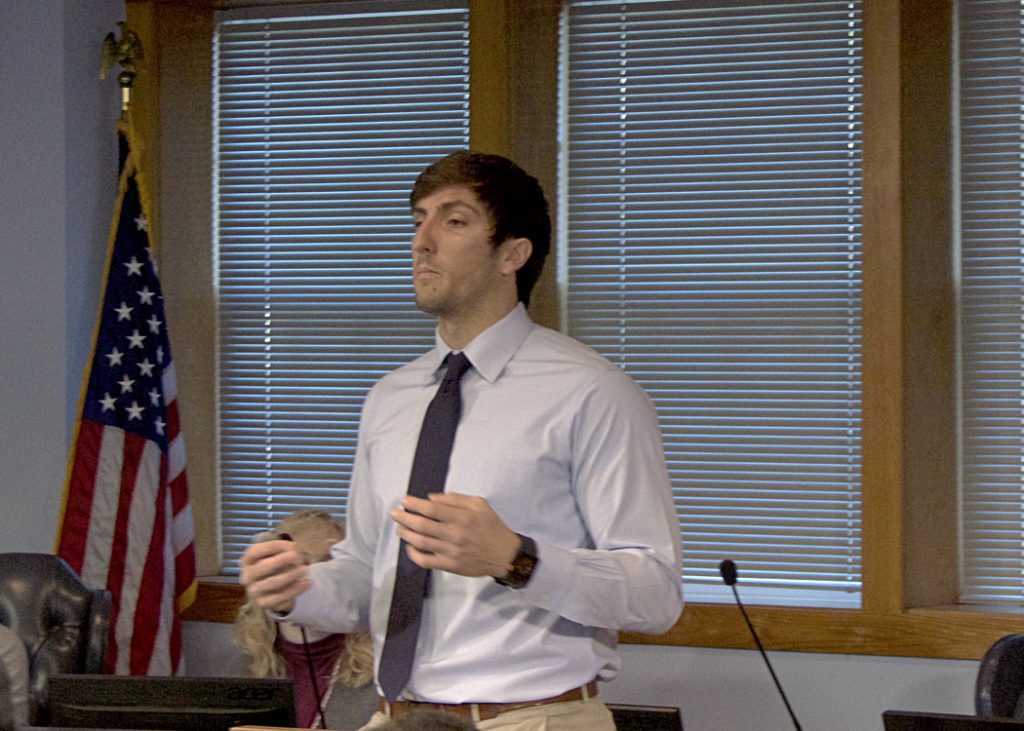 Julien Devisse of Coastal Planning and Engineering discussing beach nourishment at Kill Devil Hills.
Julien Devisse of Coastal Planning and Engineering discussing beach nourishment at Kill Devil Hills.With beach nourishment scheduled to begin in May in the towns of Duck, Kitty Hawk and Kill Devil Hills--and maybe Southern Shores, the contractor for the project, Coastal Engineering held a series of informational meetings Wednesday and Thursday.
Traveling with Coastal Engineering was a representative from Great Lakes Dredge and Dock, the company that will be pumping the sand on the beach.
The presentation in each town was geared toward the work that was being done there, but much of the presentation was consistent.
Construction
The work, as an example, will be done in 1000' sections, and as construction is underway, the public, for safety reasons, will not be permitted in the work zone.
Julien Devisse from Coastal Engineering had the task of explaining how nourishment works.
Using graphs he showed how, over time, sand from a nourished beach typically moves off shore to form a protective sand bar that helps to dissipate the fore of incoming waves.
He also discussed the timetable.
Work is scheduled to begin in Duck in mid May with a planned completion date in late June or early July.
Kitty Hawk will begin in mid June and should wrap up by mid August.
Plans call for Kill Devil Hills nourishment to begin in early August and be completed by mid September.
Devisse did caution, though, that there were a number of factors that could influence the schedule—weather is certainly one of the factors. He also noted, however, that the dredges were pumping sand almost continuously and that given the abrasive nature of sand, equipment failures could occur.
Dredging
According to the representative from Great Lakes Dredge and Dock the borrow areas, which is where the sand is located that will be brought to the beach, is about six miles off shore and is considered easily accessible with good quality sand.
Although there are conditions under which it will not be able to operate, the dredge can continue its work in seas up to 8'.
Federal regulations require monitoring for sea turtles. N.E.S.T. will be monitoring construction zones to insure no nesting sea turtles are disturbed.







